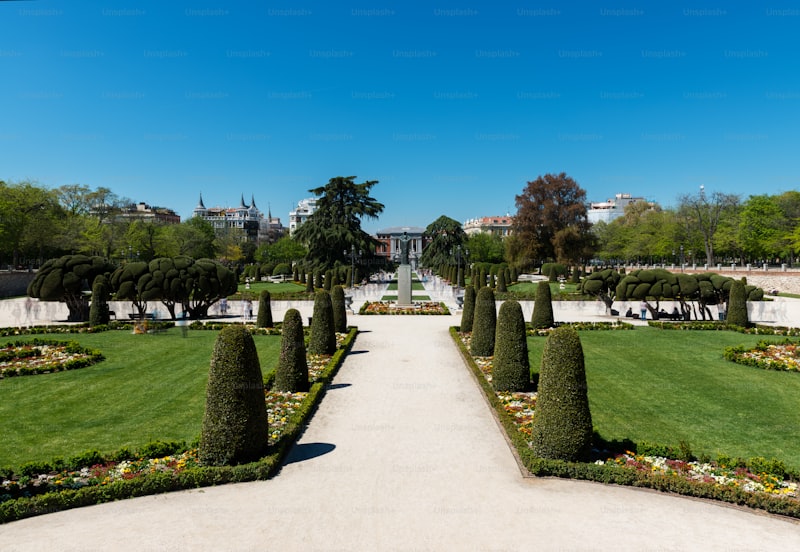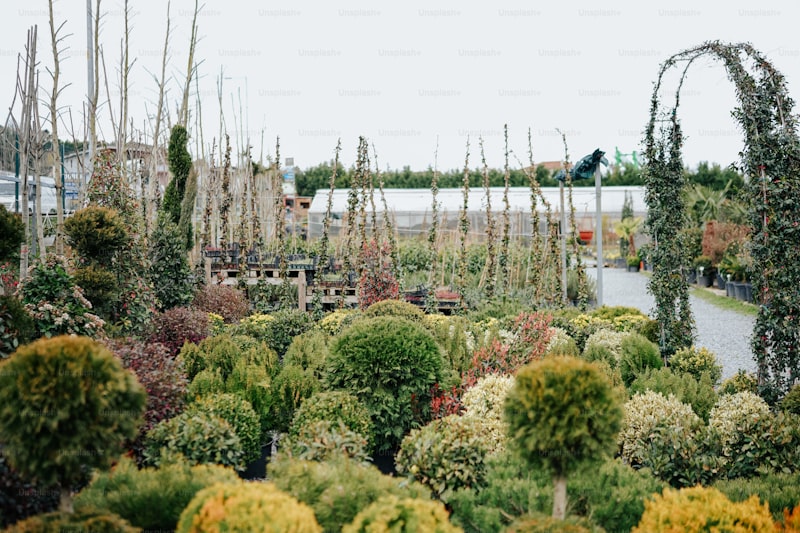When you think of Europe, images of stunning architecture, rich history, and charming cobblestone streets often come to mind. But did you know that Europe is also home to some of the most breathtaking botanical gardens in the world? These gardens are not just places to see exotic plants; they are veritable wonderlands that blend art, nature, and culture into a harmonious tapestry.
One of the standout botanical gardens in Europe is the Royal Botanic Gardens, Kew, located in London, United Kingdom. Spread across 300 acres, Kew Gardens is a UNESCO World Heritage Site and houses over 50,000 different species of plants. From the iconic Palm House with its towering palms to the serene Waterlily House, Kew Gardens offers a sensory feast for visitors.
Another gem is the Jardin des Plantes in Paris, France, known for its historic significance and scientific research. Established in 1626, it is one of the oldest botanical gardens in the world. The garden’s labyrinthine pathways lead visitors through a diverse range of landscapes, from meticulously manicured lawns to wildflower meadows.
Moving eastward, the Royal Botanic Garden in Madrid, Spain, captivates with its blend of traditional Spanish design and contemporary botanical conservation. Spanning 20 hectares, this garden is a sanctuary for both native and exotic flora, offering a tranquil retreat from the bustling city life.
In Italy, the Boboli Gardens in Florence beckon with their Renaissance charm. These formal gardens, designed in the 16th century, feature sculpted hedges, ancient oak trees, and stunning fountains that evoke a sense of grandeur and elegance.
Further north, the Royal Botanic Garden Edinburgh in Scotland delights with its unique collection of plants from around the world. Nestled against the backdrop of Arthur’s Seat, this garden is a haven for plant enthusiasts and nature lovers alike.
Each of these botanical gardens offers a unique glimpse into Europe’s rich botanical heritage. Whether you’re strolling through the meticulously curated landscapes of Kew Gardens or exploring the historical grounds of Jardin des Plantes, these gardens promise to inspire, educate, and awe visitors with their beauty and biodiversity.
Blooms and Beyond: Discovering Europe’s Enchanting Botanical Gardens
These gardens are not merely collections of plants; they are meticulously curated havens that tell stories of scientific discovery and exploration. Take, for instance, the Royal Botanic Gardens in Kew, London. Nestled along the River Thames, Kew Gardens houses over 50,000 different species, making it a biodiversity hotspot like no other. From towering redwoods to delicate orchids, each plant has a tale to tell about its journey to this botanical paradise.
Moving eastward, the Jardin des Plantes in Paris beckons with its blend of botanical beauty and historical significance. Founded in 1626 as a royal garden for medicinal plants, it evolved into a hub of botanical research and conservation. Today, it stands as a testament to France’s enduring love affair with flora.

Further south, Italy’s Giardino di Boboli in Florence offers a glimpse into Renaissance landscaping prowess. Designed in the 16th century, it showcases a symphony of geometrically aligned paths, statues, and ancient oaks—an outdoor masterpiece that has inspired artists and botanists alike for centuries.
Venturing north, the Netherlands boasts the world-renowned Keukenhof Gardens, often dubbed the Garden of Europe. Every spring, this floral wonderland bursts into a riot of colors as millions of tulips, daffodils, and hyacinths bloom, painting the landscape with hues that rival the finest paintings of the Dutch masters.
From the Mediterranean charm of Spain’s Royal Botanical Garden in Madrid to the exotic flora of the Botanical Garden of University of Coimbra in Portugal, each garden in Europe offers a unique tapestry of plant life woven with history and culture. Whether you’re a seasoned botanist or simply someone who appreciates the beauty of nature, Europe’s botanical gardens promise an unforgettable journey into the heart of floral fascination.
Hidden Gems: Unveiling Europe’s Secret Botanical Paradises

Imagine wandering through secluded gardens tucked away in the heart of Europe, where each corner reveals a new botanical wonder. From the vibrant hues of rare orchids to the delicate fragrance of ancient roses, these secret paradises are a haven for both botany enthusiasts and casual wanderers alike.
One such gem can be found in the picturesque countryside of Provence, France. Here, a centuries-old botanical garden whispers tales of forgotten herbs and medicinal plants once cherished by medieval monks. The air is thick with the scent of lavender, its purple blooms dancing in the gentle breeze—a sight that feels straight out of a fairytale.
Further north, nestled amidst the misty hills of Scotland, lies another hidden paradise: a lush arboretum brimming with exotic conifers and towering beech trees. This serene sanctuary offers a peaceful retreat where time seems to stand still, inviting visitors to lose themselves in the symphony of rustling leaves and birdsong.
Travel eastward, and you’ll stumble upon the wildflower meadows of Transylvania, Romania. Here, carpets of vibrant blooms stretch as far as the eye can see, painting the landscape in hues of gold and emerald. It’s a paradise for biodiversity, where rare species of flora thrive undisturbed, each blossom a testament to the region’s natural abundance.
Nature’s Symphony: Exploring the Diversity of Europe’s Botanical Gardens
Europe’s botanical gardens stand as vibrant orchestras in the grand symphony of nature, each one offering a unique blend of biodiversity and botanical marvels. From the lush landscapes of Kew Gardens in London to the Mediterranean hues of Jardin des Plantes in Paris, these gardens are not just collections of plants, but living museums of ecological wonder.
Imagine strolling through the avenues of Spain’s Royal Botanical Garden in Madrid, where centuries-old trees whisper stories of the past, or marveling at the alpine flora of the Alpine Botanical Garden of Champex-Lac in Switzerland, nestled amidst pristine mountain vistas. Each garden tells a tale of adaptation and preservation, showcasing plants from across the globe and highlighting Europe’s commitment to conservation.
These gardens serve not only as havens for plant species but also as educational centers, where visitors of all ages can learn about environmental sustainability and the importance of biodiversity. They provide a tangible connection to the natural world, fostering appreciation and understanding of ecosystems and their delicate balance.
In the heart of Italy, the Giardino Botanico La Mortella on the island of Ischia enchants visitors with its tropical species thriving in a Mediterranean climate. Here, palms sway gracefully alongside vibrant orchids, creating a microcosm of biodiversity that captivates the senses.
Every garden has its own rhythm and melody, harmonizing species from diverse habitats into a coherent and breathtaking display. From the northern reaches of Tromsø Arctic-Alpine Botanic Garden in Norway to the southern warmth of Botanic Gardens of Villa Taranto in Italy, these sanctuaries celebrate nature’s resilience and beauty.
Whether you’re exploring the arid landscapes of the Botanical Garden of Valencia in Spain or wandering through the historic paths of Uppsala University Botanical Garden in Sweden, Europe’s botanical gardens offer a glimpse into the intricate tapestry of life on Earth. They are sanctuaries of serenity and laboratories of discovery, where each plant tells a story and each visit unfolds a new chapter in the ongoing saga of biodiversity conservation.
Where Flora Flourishes: Europe’s Top 10 Botanical Gardens Revealed
-
Kew Gardens, London, UK: A crown jewel of botanical excellence, Kew Gardens mesmerizes with its vast collection of rare plants and iconic glasshouses like the Palm House.
-
Keukenhof Gardens, Lisse, Netherlands: Known as the “Garden of Europe,” Keukenhof bursts into a spectacular display of tulips and other bulb flowers every spring, drawing millions of visitors.
-
Jardin des Plantes, Paris, France: France’s primary botanical garden since 1626, Jardin des Plantes features remarkable alpine landscapes and the world’s oldest zoological garden.
-
Royal Botanic Gardens, Edinburgh, UK: Founded in 1670, these gardens showcase Scotland’s rich plant diversity, including its renowned Rock Garden and Victorian Palm Houses.
-
Botanischer Garten Berlin, Germany: With over 20,000 plant species, including an extensive collection of orchids and carnivorous plants, this garden is a paradise for botany enthusiasts.
-
Villa Taranto, Verbania, Italy: Set along the picturesque Lake Maggiore, Villa Taranto enchants visitors with its terraced gardens, showcasing rare species from around the globe.
-
Real Jardín Botánico, Madrid, Spain: Nestled in the heart of Madrid, this botanical garden boasts a serene atmosphere with over 5,000 species, including a unique bonsai collection.
-
Botanic Garden Meise, Brussels, Belgium: Belgium’s largest botanical garden houses an impressive herbarium and a vast arboretum, offering a tranquil retreat just outside Brussels.
-
Botanická Zahrada, Prague, Czech Republic: Dating back to 1775, this garden features Central Europe’s largest collection of alpine plants and a splendid display of Czech flora.
-
Arboretum Volčji Potok, Slovenia: Known for its expansive collection of rhododendrons and azaleas, this arboretum provides a serene escape into Slovenia’s natural beauty.
Frequently Asked Questions
How can I plan a visit to Europe’s best botanical gardens?
Discover how to plan a visit to Europe’s premier botanical gardens with our concise FAQ guide. Learn essential tips on choosing the best time to visit, accessing tickets, and exploring must-see highlights. Navigate through garden layouts, understand seasonal blooms, and make the most of your botanical adventure across Europe.
What are the unique features of European botanical gardens?
Discover the distinctive features of European botanical gardens, renowned for their diverse plant collections, architectural elegance, and historical significance. Explore curated landscapes showcasing rare species, educational exhibits, and conservation efforts, offering immersive experiences in natural beauty and botanical knowledge.
Are there famous historical botanical gardens in Europe?
Explore famous historical botanical gardens in Europe, showcasing centuries-old collections of diverse plant species. Discover their cultural significance and architectural beauty, offering a unique blend of history and natural splendor.
What are the top botanical gardens to visit in Europe?
Discover Europe’s finest botanical gardens with our guide to the top destinations for botanical enthusiasts. Explore a curated selection of gardens renowned for their diverse plant collections and stunning landscapes, offering a unique blend of natural beauty and horticultural expertise.
How can I explore European botanical gardens sustainably?
Learn how to explore European botanical gardens sustainably with practical tips on eco-friendly transportation, responsible waste disposal, and respecting plant life. Discover ways to minimize your ecological footprint while enjoying the beauty of diverse plant species and landscapes.


